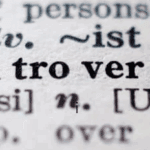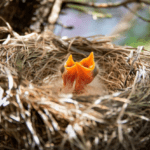
Birds Making Nests Out of Cigarette Butts: A Detailed Exploration

The impact of human activities on wildlife is an ever-growing concern, and one of the most startling recent discoveries is that some birds are using cigarette butts to build their nests. This unusual behavior raises questions about the effects of pollution on animals and the adaptability of birds in urban environments. This blog post delves into this phenomenon, supported by stats, analytics, and an exploration of the broader implications.
The Growing Issue of Cigarette Litter
Cigarette butts are one of the most pervasive forms of litter worldwide. According to the World Health Organization (WHO), approximately 6 trillion cigarettes are smoked annually, with around 4.5 trillion cigarette butts discarded each year. The majority of these butts end up as litter on streets, beaches, and other public places. In urban areas, this litter becomes accessible to birds and other animals.
Why Are Birds Using Cigarette Butts?
Birds in urban environments are increasingly adapting to the materials available to them. Cigarette butts, composed of cellulose acetate fibers, are readily available and lightweight, making them convenient for nest-building. Additionally, some studies suggest that nicotine residues in cigarette butts may serve as a deterrent to parasites, providing a perceived benefit to the birds.
Grid: Reasons Birds Use Cigarette Butts in Nests
| Reason | Explanation |
|---|---|
| Availability | Cigarette butts are abundant in urban areas, making them an easily accessible resource for nest-building. |
| Lightweight Material | The cellulose acetate fibers in cigarette butts are lightweight, making them easy for birds to carry and incorporate into their nests. |
| Parasite Deterrence | Nicotine residues in cigarette butts may help deter parasites, providing a perceived benefit to birds. |
| Adaptability | Urban birds are increasingly using unconventional materials due to the scarcity of natural resources in cities. |
The Impact on Bird Health
While the use of cigarette butts may provide some benefits, such as parasite deterrence, it also poses significant risks to bird health. The toxic chemicals found in cigarette butts, including nicotine, arsenic, and lead, can have harmful effects on birds. These toxins can leach into the nest environment, potentially affecting the health of both adult birds and their chicks.
Stats: The Toxicity of Cigarette Butts
- Nicotine: A potent neurotoxin that can cause developmental issues in chicks.
- Arsenic: A known carcinogen that can lead to long-term health problems.
- Lead: A toxic metal that can cause neurological damage in birds.
Case Studies and Research Findings
Several studies have documented the presence of cigarette butts in bird nests and analyzed the potential effects on bird populations.
- Mexico City Study (2012): Researchers found that 89% of house sparrow nests and 96% of house finch nests in the study contained cigarette butts. The study suggested that nicotine might help reduce mite infestations, but the long-term health impacts on birds were not well understood.
- London Study (2020): A more recent study in London observed a significant increase in the use of cigarette butts in bird nests over the past decade. The study noted a correlation between the use of cigarette butts and lower chick survival rates, indicating potential health risks.
Environmental and Ecological Implications
The presence of cigarette butts in bird nests is a symptom of a larger issue: pollution in urban environments. This behavior highlights the adaptability of birds but also underscores the need for better waste management practices to protect wildlife.
Grid: Broader Environmental Implications
| Implication | Details |
|---|---|
| Urban Pollution | The widespread availability of cigarette butts in cities reflects broader pollution issues, affecting not just birds but also other wildlife and ecosystems. |
| Wildlife Health Risks | The use of toxic materials like cigarette butts in nests poses significant health risks to birds, potentially affecting population dynamics. |
| Human Responsibility | The phenomenon highlights the impact of human behavior on wildlife, emphasizing the need for responsible waste disposal and environmental stewardship. |
What Can Be Done?
To mitigate the impact of cigarette butt litter on birds and other wildlife, several steps can be taken:
- Public Awareness Campaigns: Educating the public about the environmental impact of cigarette butt litter and encouraging responsible disposal can help reduce the availability of these materials to birds.
- Improved Waste Management: Cities can implement better waste management practices, including the installation of cigarette disposal bins in public areas.
- Research and Monitoring: Continued research is needed to understand the long-term effects of cigarette butts on bird populations and to develop strategies for mitigating these impacts.
Conclusion
The use of cigarette butts by birds for nest-building is a fascinating yet concerning phenomenon. While it showcases the adaptability of urban birds, it also raises serious questions about the health risks and broader environmental implications. By addressing the issue of cigarette litter and promoting responsible waste management, we can help protect these birds and ensure a healthier environment for all.
Hello, I am Aman (: Full Time Traveler :) At the age of 41, in April 2023, fueled by my love for travel and the determination not to remain fixed like a tree, I embarked on a bold journey. Having dedicated 17 years to a corporate job, I chose to transition from a full-time employee to a full-time traveler, driven by the desire to break free from the routine and constraints of a conventional life. Along the way, I not only explored the wonders of travel but also uncovered the transformative power of financial freedom. I realized how it could liberate me to lead a life teeming with adventure, purpose, and fulfillment. Through my blogs, I am passionately sharing my story, aiming to inspire and provide valuable guidance to those, like me, who aspire to weave travel into a life overflowing with limitless possibilities.






















Post Comment
You must be logged in to post a comment.